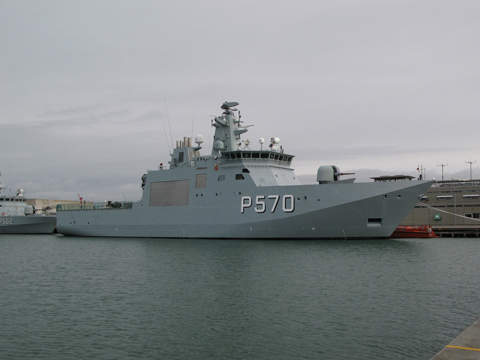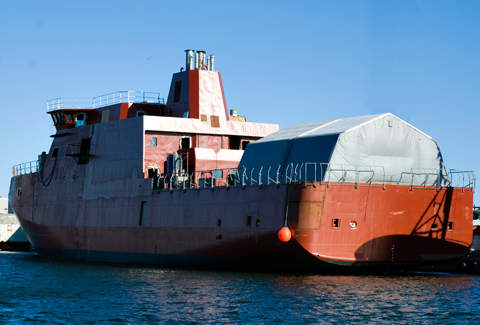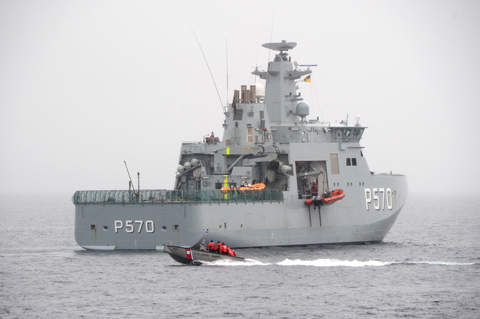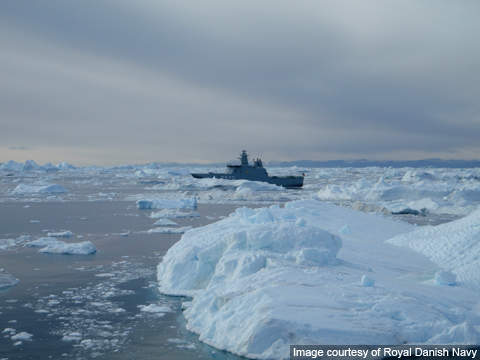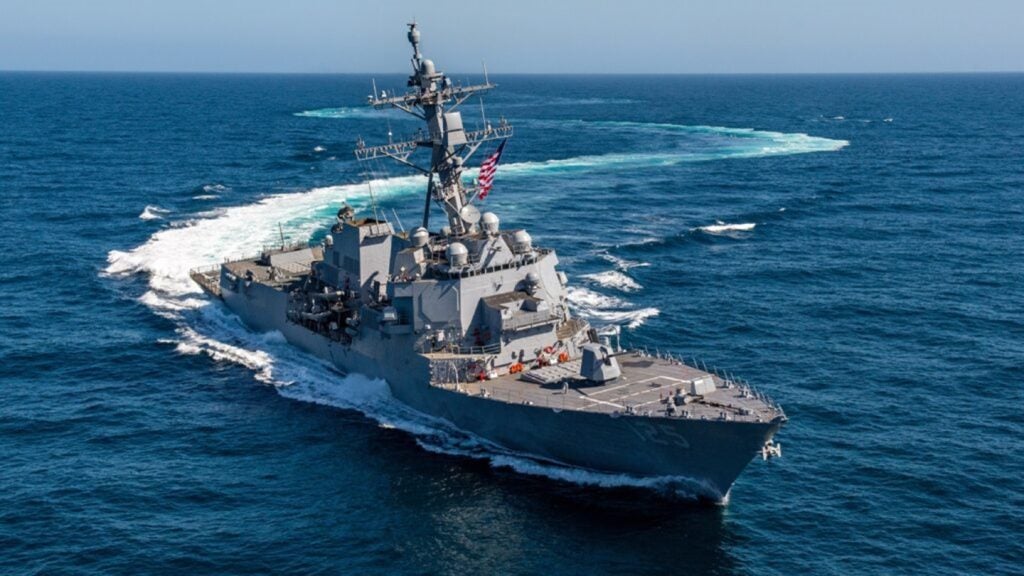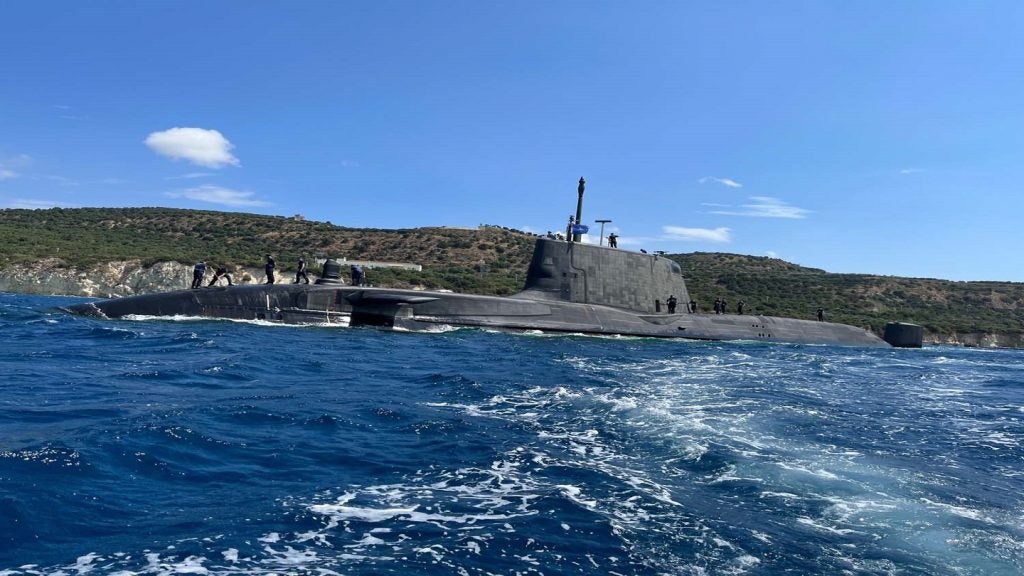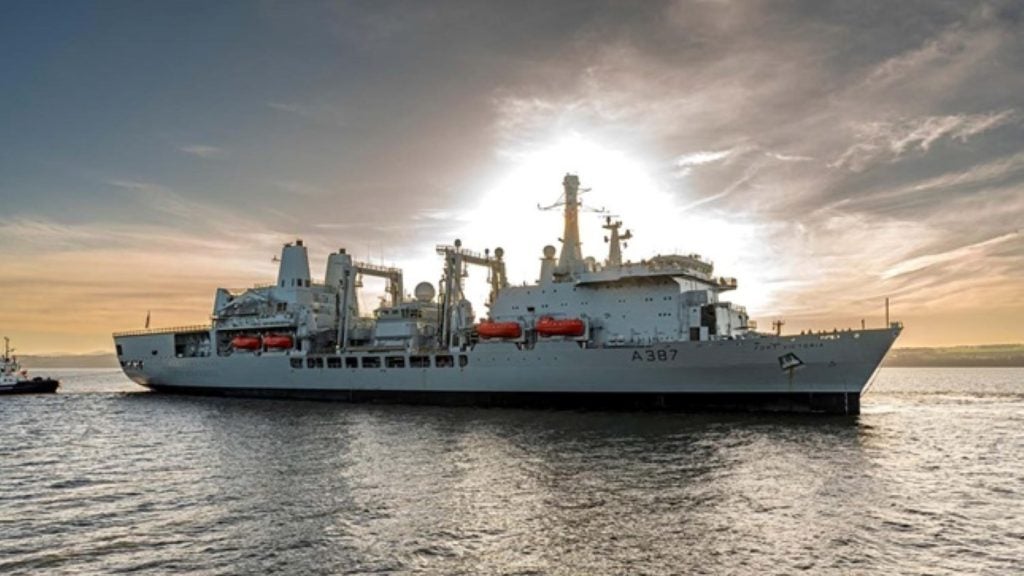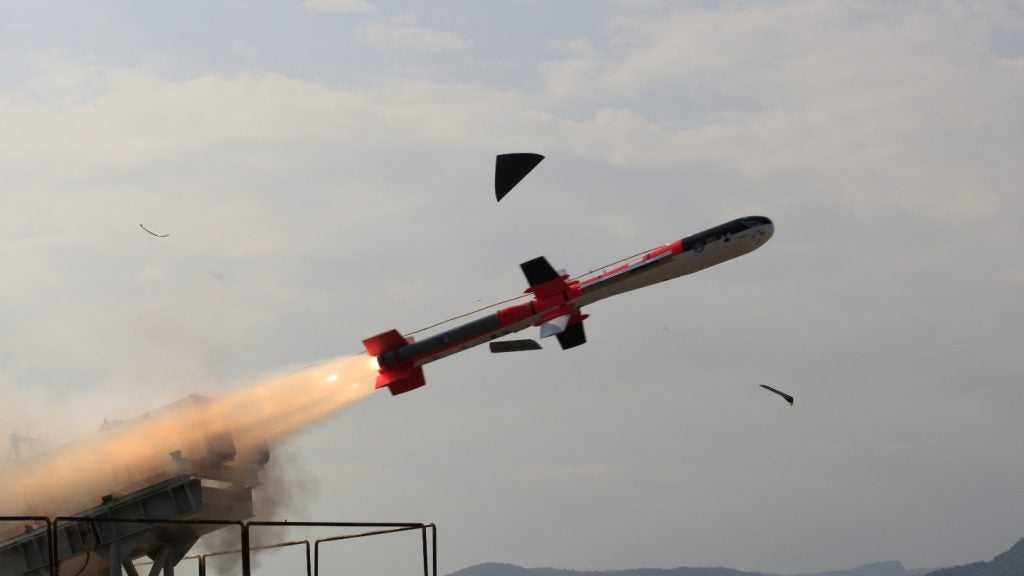The Knud Rasmussen class ocean patrol vessels are in service with the Royal Danish Navy. Built by Karstensens Skibsværft, the two OPVs replaced the Agdlek-class patrol cutters on a one-by-one basis.
In December 2003, the Danish parliament approved 507m Kroner for the construction of two new Knud Rasmussen class offshore patrol ships for North Atlantic and Arctic waters. These OPVs are termed Inspektionsfartøjer (IF) or inspection ships in the Danish service. The shipbuilding contracts for the OPVs were placed in December 2004.
The keel for the lead OPV in class, Knud Rasmussen (P 570), was laid down in November 2005. It was launched in October 2006 and commissioned into the Royal Danish Navy in February 2008. The second and last ship in class, Ejnar Mikkelsen (P 571), was launched in June 2007 and commissioned in January 2009.
The Knud Rasmussen class OPVs are deployed in a range of missions including search and rescue, sovereignty enforcement, fisheries inspections, environment protection, icebreaker assignments, towage and salvage operations, and general assistance to the Danish and Greenland governments. The two vessels are operated by 1 Squadron, based at Frederikshavn naval base.
Design and features
The Knud Rasmussen class was designed by Karstensens Ship Yacht in cooperation with the Danish Defense Acquisition and Logistics Organisation. These new 1,720t patrol vessels are significantly larger than their predecessors, the 330t Agdlek class patrol cutters. The hull is designed to break the normal 40cm sea ice and the specified 70cm of hard fjord ice. The broken ice is ingested by the engine cooling seawater intakes.
A stowage bay on the starboard side is provided for two rigid hull inflatable boats (RHIB) and davits. It is covered by a roll-up door. An internal bay under the helicopter landing deck consists of a launch and recovery slipway for a 12m LCP class landing craft. The high-speed LCPs are equipped for Arctic service and fitted with search and rescue equipment.
Construction
The main contractor for the construction of the OPVs is Karstensens Skibsværft, Skagen. The OPV hulls were built by Stocznia Pólnocna in Gdansk, Poland. The propulsion system was fitted in Poland before the hulls were towed to Denmark for complete outfitting.
Command and control
The command and control system is the Terma C4I system. The C4I system will enable Knud Rasmussen class vessels to function in net-based operations. The system allows the OPV to exchange data between national and international naval units, as well as Danish army and air force units.
Weapon systems
The main gun fitted is an Otobreda 76mm super rapid gun. The gun can fire at a rate of 120 rounds per minute for a maximum range of 30,000m. The OPV is also armed with two 12.7mm Browning .50 calibre machine guns.
A missile launcher housed in the rear container position can fire Evolved Sea Sparrow Missiles (ESSM). The anti-submarine warfare equipment includes the MU90 ASW torpedo. The torpedo can carry a 32.7kg shaped charge warhead for a maximum range of 25km.
Sensors / radars
The Danish Terma Scanter 4100 radar onboard can effectively track small targets at distances up to 160km in hard conditions. The radar can detect both air and surface targets.
Other sensor equipment includes three Furuno navigation radars, SAAB CEROS 200 radar, CWI illumination radar and optronic tracking system.
Aircraft
The larger ship size provides a sizeable aft helicopter deck behind the superstructure.
The helipad can support the operations of a medium-sized helicopter.
The OPV lacks a hangar but features refuelling facilities, which increase the endurance and range of the helicopter.
Propulsion
The Knud Rasmussen class is powered by two Man B&W Alpha 8L27/28 diesel engines driving a single propeller. Each engine generates a power output of 2,720kW. The propulsion system provides a top speed of 17k and a maximum range of 3,000nm.

